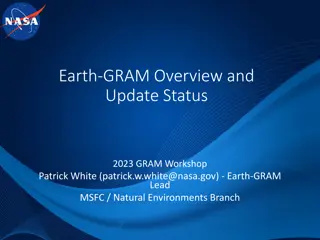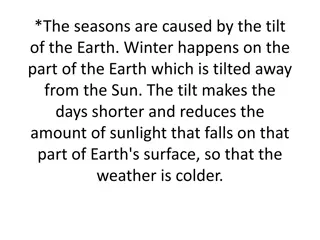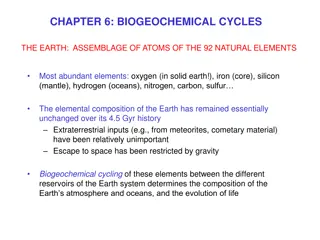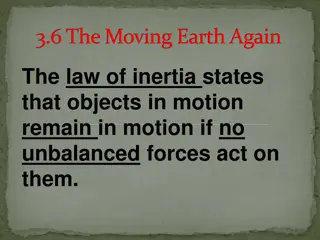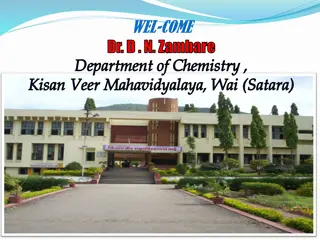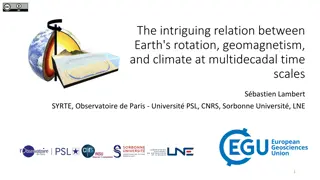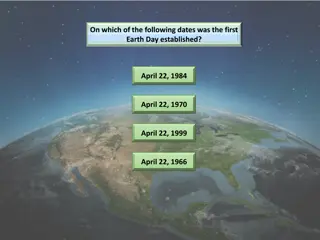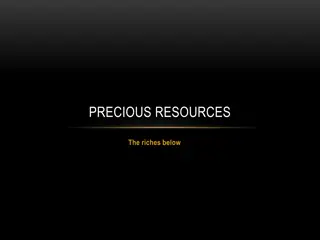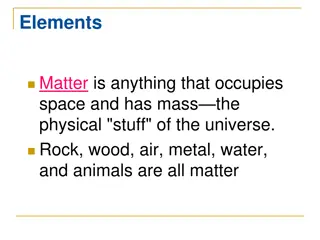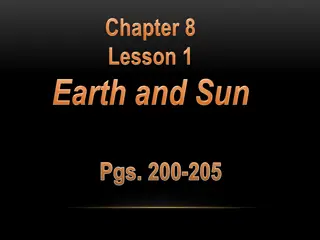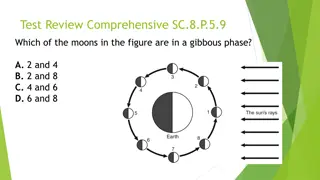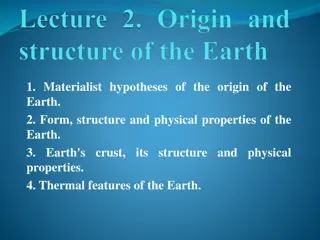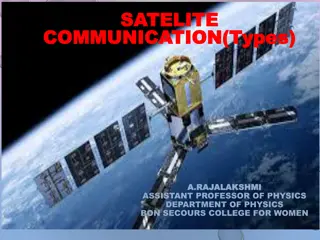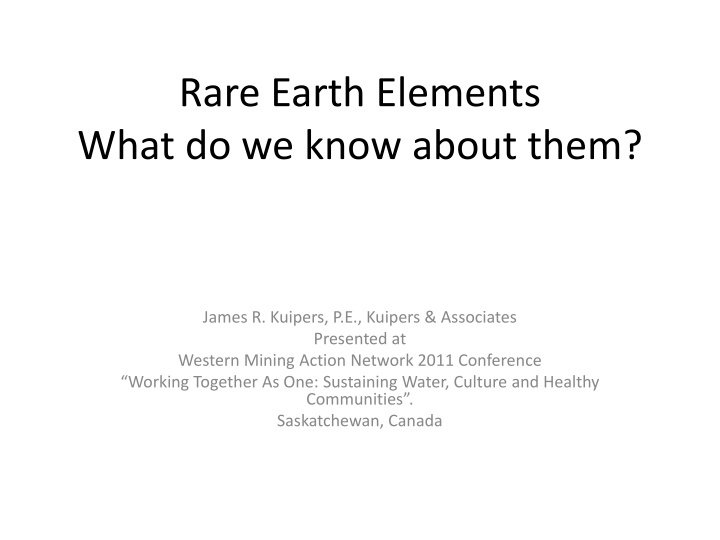
Rare Earth Elements: Properties, Uses, and Occurrence
Explore the world of rare earth elements, including their composition, properties, uses in various industries, and where they can be found. Learn about the significance of rare earth elements in modern technologies and their impact on the environment and economy.
Download Presentation

Please find below an Image/Link to download the presentation.
The content on the website is provided AS IS for your information and personal use only. It may not be sold, licensed, or shared on other websites without obtaining consent from the author. If you encounter any issues during the download, it is possible that the publisher has removed the file from their server.
You are allowed to download the files provided on this website for personal or commercial use, subject to the condition that they are used lawfully. All files are the property of their respective owners.
The content on the website is provided AS IS for your information and personal use only. It may not be sold, licensed, or shared on other websites without obtaining consent from the author.
E N D
Presentation Transcript
Rare Earth Elements What do we know about them? James R. Kuipers, P.E., Kuipers & Associates Presented at Western Mining Action Network 2011 Conference Working Together As One: Sustaining Water, Culture and Healthy Communities . Saskatchewan, Canada
Rare Earth Elements What Are They? The 30 rare earth elements are composed of the lanthanide and actinide series. One element of the lanthanide series and most of the elements in the actinide series are called trans-uranium, which means synthetic or man-made. 17 common rare earth elements found in nature: cerium, dysprosium, erbium, europium, gadolinium, holmium, lanthanum, lutetium, neodymium, praseodymium, samarium, terbium, thulium, ytterbium, yttrium, ferrocerium, monazite, bastnasite, mischmetal
Rare Earth Elements Present and Future Uses Estimated 2009 distribution of rare earths by end use, in decreasing order, was as follows (USGS 2011): chemical catalysts, 22%; metallurgical applications and alloys, 21%; petroleum refining catalysts, 14%; automotive catalytic converters, 13%; glass polishing and ceramics, 9%; rare-earth phosphors for computer monitors, lighting, radar, televisions, and x-ray- intensifying film, 8%; permanent magnets, 7%; electronics, 3%; and other, 3%. The trend appears to be for a continued increase in the use of rare earths in many applications, especially automotive catalytic converters, permanent magnets, and rechargeable batteries for electric and hybrid vehicles.
Rare Earth Elements Occurrence First discovered in the 19th Century in Sweden, they were believed to be some of the most uncommon elements. Rare-earths have been found to be relatively abundant in the Earth's crust, but rarely concentrated. High cost of extraction means that only deposits with high concentrations are likely to be developed. Rare earth minerals are usually found in association with alkaline to peralkaline igneous complexes, in pegmatites associated with alkaline magmas and in or associated with carbonatite intrusives. Perovskite mineral phases are common hosts to rare earth elements within the alkaline complexes. Mantle derived carbonate melts also are carriers of the rare earths. Hydrothermal deposits associated with alkaline magmatism contain a variety of rare earth minerals.
Rare Earth Elements Mine Production and Reserves Mine Production Reserves Country/Region 2009 2010 Total United States 13,000,000 Australia 1,600,000 Brazil 550 550 48,000 China 129,000 130,000 55,000,000 Commonwealth of Independent States 19,000,000 India 2,700 2,700 3,100,000 Malaysia 350 350 30,000 Other countries 22,000,000 World total (rounded) 133,000 130,000 110,000,000 USGS 2011
Rare Earth Elements World Resources Rare earths are relatively abundant in the Earth s crust, but discovered minable concentrations are less common than for most other ores. U.S. and world resources are contained primarily in bastn site and monazite. Bastn site deposits in China and the United States constitute the largest percentage of the world s rare-earth economic resources, while monazite deposits in Australia, Brazil, China, India, Malaysia, South Africa, Sri Lanka, Thailand, and the United States constitute the second largest segment. Apatite, cheralite, eudialyte, loparite, phosphorites, rare-earth-bearing (ion adsorption) clays, secondary monazite, spent uranium solutions, and xenotime make up most of the remaining resources. Undiscovered resources are thought to be very large relative to expected demand. A very large resource enriched in heavy rare-earth elements is inferred for phosphorites of the Florida Phosphate District. USGS 2011
Rare Earth Elements Future Mines Exploration efforts to develop rare earths projects surged in 2010, and investment and interest increased dramatically. Economic assessments continued in North America at Bear Lodge in Wyoming; Diamond Creek in Idaho; Elk Creek in Nebraska; Hoidas Lake in Saskatchewan, Canada; Lemhi Pass in Idaho-Montana; and Nechalacho (Thor Lake) in Northwest Territories, Canada. Other economic assessments took place in other locations around the world, including Dubbo Zirconia in New South Wales, Australia; Kangankunde in Malawi; Mount Weld in Western Australia, Australia; and Nolans Project in Northern Territory, Australia.
Rare Earth Elements Mining, Processing and Refining Typically mined by bulk tonnage open pit methods Higher grade deposits could be mined underground Mineral processing typically done on-site using flotation and gravity processing Other processes may also be applicable Refining is most difficult/toxic step acid or alkaline leach methods Pyrometallurgy Environmental Impacts Typical to hardrock mining (water, air, soil contamination) Strong association with deposit type (acid or alkaline)
Rare Earth Elements Environmental Toxicity Few toxicological data are available compared to other elements (e.g. lead, cadmium, chromium, mercury, nickel, zinc, arsenic, selenium) for either human or other ecological receptors Some suggestion of chronic exposure impacts and strong suggestion of impacts when exposed to compounds (metallurgical and chemical, possible ecological) Possible effects include: lung disease, liver disease, eye and skin irritation, other effects
Rare Earth Elements Conclusions Rare Earth mining will increase but is likely to occur in only limited circumstances High grade and high tech with large funding required Sector is highly vulnerable to promotions and scams In more suitable locations with good practices should be possible with minimal impacts Potential opportunity to work with industry? 100% from reprocessed tailings and waste rock? Need more environmental data Human health impacts (workforce and local residents) Ecological impacts (aquatic life, wildlife, riparian)







